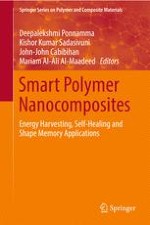2017 | OriginalPaper | Chapter
Self-healing Polymer Composites Based on Graphene and Carbon Nanotubes
Authors : Santwana Pati, Bhanu Pratap Singh, S. R. Dhakate
Published in: Smart Polymer Nanocomposites
Publisher: Springer International Publishing
Activate our intelligent search to find suitable subject content or patents.
Select sections of text to find matching patents with Artificial Intelligence. powered by
Select sections of text to find additional relevant content using AI-assisted search. powered by
